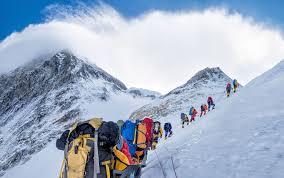Thangka Paintings in Ladakh: Origins, Types & Where to Witness

Exploring the heights of Ladakh on a Leh Ladakh Bike Trip is the best way to experience the beauty of Ladakh at your own pace. It allows you to explore and interact with Ladakh’s unknown beauty like Karsha Monastery in Ladakh and Thanka Paintings in Ladakh. These paintings are among the ancient art of the region with great historical and cultural significance. Let us guide you through these paintings so that you can also witness the artistic beauty of Ladakh.
Best Places for Thangka Paintings in Ladakh – H2
1. The Origins of Thangka Painting – H3

History says that Ladakh’s Thangka Paintings originated in the 7th century. This is one of Ladakh’s unique arts and is linked to Tibetan Buddhism.
Thangka is derived from the Tibetan term “thang yig,” which means a recorded message.
In ancient times, Thangka was used as a tool for teaching to teach Buddhist students the life of Buddha, and other deities, as well as the principles of Buddhism.
Ladakh Thangka Paintings were just a means of teaching, but eventually, they became a means to tell spiritual stories.
Then over time, when Buddhism spread from the Tibetan region to the Himalayan region and Ladakh, it evolved as an art.
Ladakh’s customs and artists made Thangka an art to showcases different stories and expressions.
2. Cultural Significance – H3

Thangka Paintings in Ladakh hold a great religious and cultural significance.
Ladakh evolved these paintings uniquely as a piece of decoration, and also sacred objects that hold the spirit of the deities they depict.
You can find these paintings at almost every sacred place in Ladakh, like in monasteries, serving as a meditation tool, a way to focus and purify the mind.
In some monasteries, these paintings are showcased for visitors, but in others, they are rolled and kept inside.
However, these are unrolled and displayed during festivals, such as the Hemis Festival, which attracts devotees and tourists from around the world.
Apart from their religious importance, these paintings are also masterpieces of art, and every color, pattern, and figure carries a specific meaning.
They usually depict Buddha’s life, but each color and design is specially created to promote peace, reflection, and meditation, making them an integral part of Buddhist practice.
3. Types of Thangka Paintings – H3
Religious Thangkas – H4
Religious Thangkas are the most common type. They depict various Buddhas, Bodhisattvas, and other deities. These paintings are visual representations of the divine, helping people to visualize and connect with nature.
Mandala Thangkas – H4
Mandalas are the most popular type of Thangka, featuring geometric designs that represent the universe. The detailed patterns and symmetries of these paintings help practitioners to attain higher states of consciousness.
Astrological Thangkas – H4
Astrological Thangkas represent the Tibetan astrological calendar and are used for Astrological purposes. They include detailed depictions of the planets and constellations. These Thangkas are consulted during important life events, such as births, and marriages to ensure auspicious timing and guidance.
Life Story Thangkas – H4
These Thangkas narrate the life stories of significant Buddhist figures, such as the Buddha or important lamas. They typically illustrate the key events and teachings of these figures. Life Story Thangkas are educational tools to understand and remember the essential lessons and historical moments in Buddhism.
4. Places to Visit for Thangka Paintings – H3

Leh – H4
Leh, the capital of Ladakh is a hub for exploring the culture and arts of Ladakh. The whole town as its markets are filled with workshops and galleries where local artists create and sell Thangka Paintings in Ladakh. The Central Asian Museum in Leh is the best place to see the collection of Thangkas.
Thiksey Monastery – H4
Thiksey Monastery, located about 19 kilometers from Leh, is another significant site. The monastery’s assembly hall and prayer rooms are filled with beautiful Thangkas. It also has a store where visitors can purchase Thangkas and other religious artifacts.
Hemis Monastery – H4
One of the largest and most famous monasteries in Ladakh, Hemis Monastery is popular for its collection of Thangka Paintings. The monastery hosts the annual Hemis Festival, during which rare Thangkas are displayed for the public. The festival also features traditional music, dance, and religious rituals, and offers visitors a unique opportunity to witness Thangkas along with other traditional art forms.
Alchi Monastery – H4
Alchi Monastery is unique among Ladakh’s monasteries due to its ancient and well-preserved Thangka Paintings. Dating back to the 11th century, the monastery’s wall paintings and Thangkas offer a glimpse into the early artistic traditions of Ladakh. Unlike other monasteries, Alchi’s artworks are more closely related to the Indian artistic styles and reflect a blend of cultures that influenced Ladakh.
Local Markets – H4
For those interested in buying Thangka Paintings, Ladakh’s local markets offer a variety of options. The Leh Main Bazaar has several shops selling Thangkas. These markets provide an opportunity to purchase authentic Thangka Paintings directly from artists or local vendors. Explore the market and take your time to find the best paintings.
Conclusion:
Visiting Ladakh offers a unique opportunity to see this fascinating art form. Whether you are exploring the markets or the serene halls of ancient monasteries, you will find Thangka Paintings mesmerizing and peaceful to your mind and soul.




